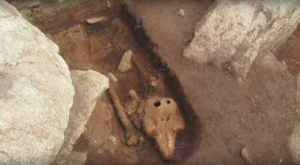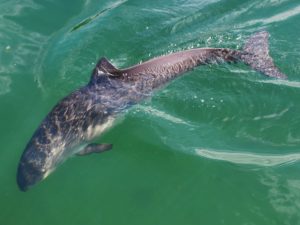Porpoise Burial Mystery
In September 2017 archaeologists were wrapping up an excavation on the English Channel island of Chapelle Dom Hue when they made an unexpected and mystifying discovery. The excavation revealed a carefully cut grave plot, which the archaeologists reasonably assumed would hold the remains of a deceased human. Instead, they found that the grave contained the bones of a juvenile porpoise. 
The grave, carefully cut into the rocky soil on a high point of the island overlooking the sea, was constructed with the same techniques used for human graves.
Philip de Jersey, a States of Guernsey archaeologist, said: “If they had eaten it or killed it for the blubber, why take the trouble to bury it? It was entirely consistent with a human burial, which is one of the most puzzling aspects,” de Jersey added. “The grave cut has been dug very carefully, with vertical sides and a flat base cut into the underlying bedrock. This has taken some considerable care and effort.”
He said it was the most unusual find in his 35-year career. “It’s very peculiar, I don’t know what to make of it. Why go to the trouble of burying a porpoise in what looks like a grave. It’s a wonderful surprise.”
Perhaps the answer is obvious: a wild porpoise developed a bond with one or more of the monks. Someone may have started to feed it, or found it stranded and helped it back into the sea. Or, the porpoise and the man saw each other at a certain time of day in the same spot and a companionship developed. When it died, or if it was killed, the porpoise was lovingly buried. 


